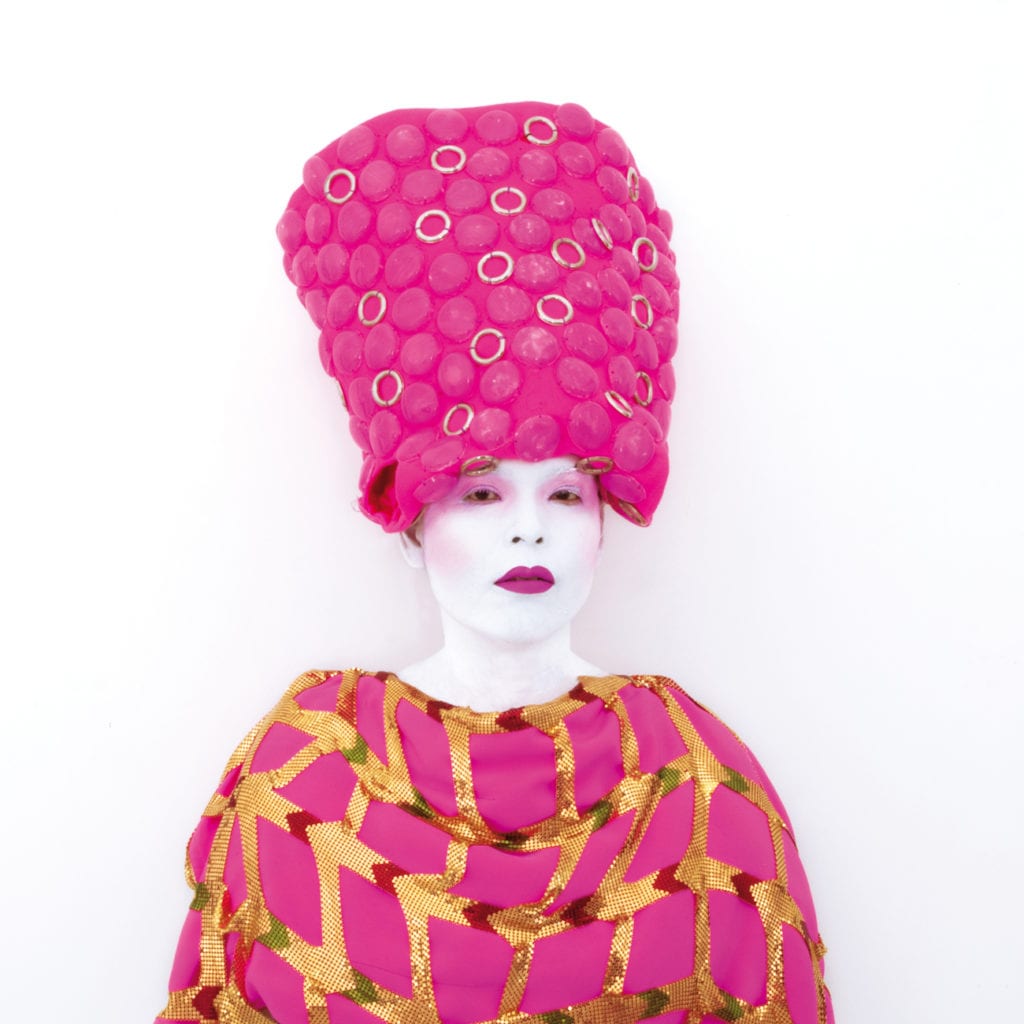JUNE 4 – JULY 30, 2016
The images included in the exhibition best demonstrate the various manners in which contemporary artists employ color photography as a vital aspect of their work. They have expanded the boundaries of what is typically associated with fine art photography and the commonly held notion from the early foundations of the medium that it should only be monochromatic. Although some avant-garde photographers would experiment with color from the early twentieth century, its acceptance into the realm of fine art would only occur many decades later with the advent of more stable printing processes and its use by artists who did not identity exclusively as photographers. Color would have a primary role in the medium gaining wider approval as a fine art form and no longer as a separate practice performed solely by conventional photographers.
-

Kimiko Yoshida
The Torero Bride with a Black Suit of Lights, Remembering Picasso (Self-portrait) Add to cart -

Kimiko Yoshida
The Miao Bride, Guizhou, China, Self-Portrait Add to cart -

Kimiko Yoshida
The Massai Bride Wearing a Warrior’s Face Ruff, Kenya (Self-Portrait) Add to cart -

Kimiko Yoshida
The Kirdi Bride, Cameroon (Self-portrait) Add to cart -

Kimiko Yoshida
Painting (Wise King Melchior by Mantegna), Self Portrait Add to cart -

Kimiko Yoshida
Painting (Nefertiti – “The Beautiful One Has Arrived” – Queen of Ancient Egypt), Self Portrait Add to cart -

Joyce Tenneson
Two Mango Lilies Add to cart -

Joyce Tenneson
Trumpet Flowers Add to cart -

Joyce Tenneson
Three Chinese Lanterns Add to cart
ABOUT THE EXHIBITION
The images included in the exhibition best demonstrate the various manners in which contemporary artists employ color photography as a vital aspect of their work. They have expanded the boundaries of what is typically associated with fine art photography and the commonly held notion from the early foundations of the medium that it should only be monochromatic. Although some avant-garde photographers would experiment with color from the early twentieth century, its acceptance into the realm of fine art would only occur many decades later with the advent of more stable printing processes and its use by artists who did not identity exclusively as photographers. Color would have a primary role in the medium gaining wider approval as a fine art form and no longer as a separate practice performed solely by conventional photographers.
Color photography gives a closer approximation to our visual experience of the world. Silver gelatin prints on the other hand, convert the world to grayscale tones and control focus through depths of field which is often more abstract and reductionist than color images. Color can complicate the decisions a photographer has to make in order to achieve a successful result. Many artists see it as an opportunity and rise to the challenge to expand and fully utilize the potential of the camera. Although varied in subject matter, Jan Groover, Joyce Tenneson, Dimitris Yeros, and Kimiko Yoshida exemplify this trend and demonstrate the possibilities of full color spectrum imagery.
One of the earliest proponents for the use of color in the late 1970s, Jan Groover’s use is central to her renowned, formalist still-life photographs of household objects. Inspired by the early painted still-lifes of Giorgio Morandi, she arranges basic forms and shapes in her compositions. Groover is masterful at working with lighting and depth of field with her employment of subtle color giving further dimension to her work. Her large color close-ups of objects such as metal utensils, bowls, glass dishes, and other kitchen implements explore the connections between the items, but the meaning of the objects is of no importance, only the relationships between the forms and colors that emerge.
Joyce Tenneson’s work is characterized by an exploration of personal archetypes within ethereal and delicately colored surroundings. Her portraits go beyond a surface recording of people’s likenesses appealing to a more spiritual side. She attempts to open herself to the subject’s universe, to discover some inner essence that helps crystallize their uniqueness while also tying each individual to one another. This is often achieved by employing a delicate tonal range of colors. Tenneson also photographs flowers as she does people. She sees flowers not as mere decorations, but as distinct personalities letting the vibrant colors that characterize the plants shine through.
Dimitris Yeros utilizes color to full effect in his two series of enigmatic portraits which depict people often within nature and paired with animals. A Greek artist, he explores mythology and the study of nudes, recalling Surrealist traditions and a return to an idealized Arcadia. The often nude male and female subjects are set against elaborately constructed or found backgrounds that illustrate the lushness of nature in its true and vibrant colors. Despite ambiguous interpretations of this series, Yeros succeeds in uniting two separate forms, human and animal, into harmonious and creatively vibrant images.
Kimiko Yoshida’s arresting self-portraits are based on notions of identity and transformation. Through the various elaborate costumes and adornments she wears, Yoshida creates individual histories across a range of color schemes. Her focus became centered on feminine identity in which she seeks to erase any semblance of self through intricate attire. Her “ceremony of disappearance” has resulted in a prolific output of various guises from an indigenous Nigerian bride to an ethereal matador to a vibrant Red Guard and beyond. Truly a conceptual artist, Yoshida’s work utilizes color photography to dramatic effect.
Taken as a whole, these artists demonstrate the vital position that color photography now holds within contemporary art. The full spectrum of color the human eye can experience opens the medium to a variety of possibilities to present visually striking imagery and conceptual artwork which also challenges the viewer to see how color photography is being used today.

